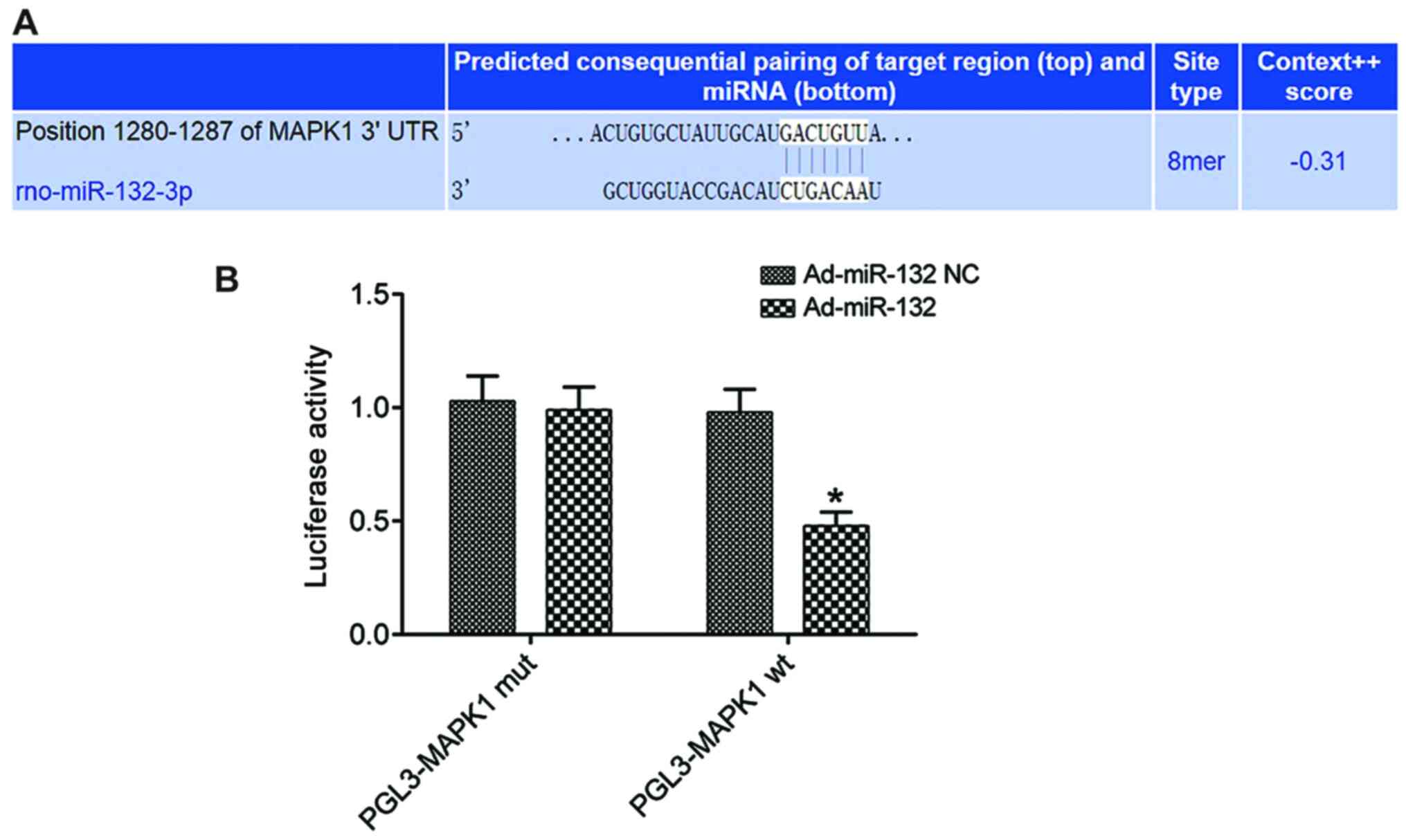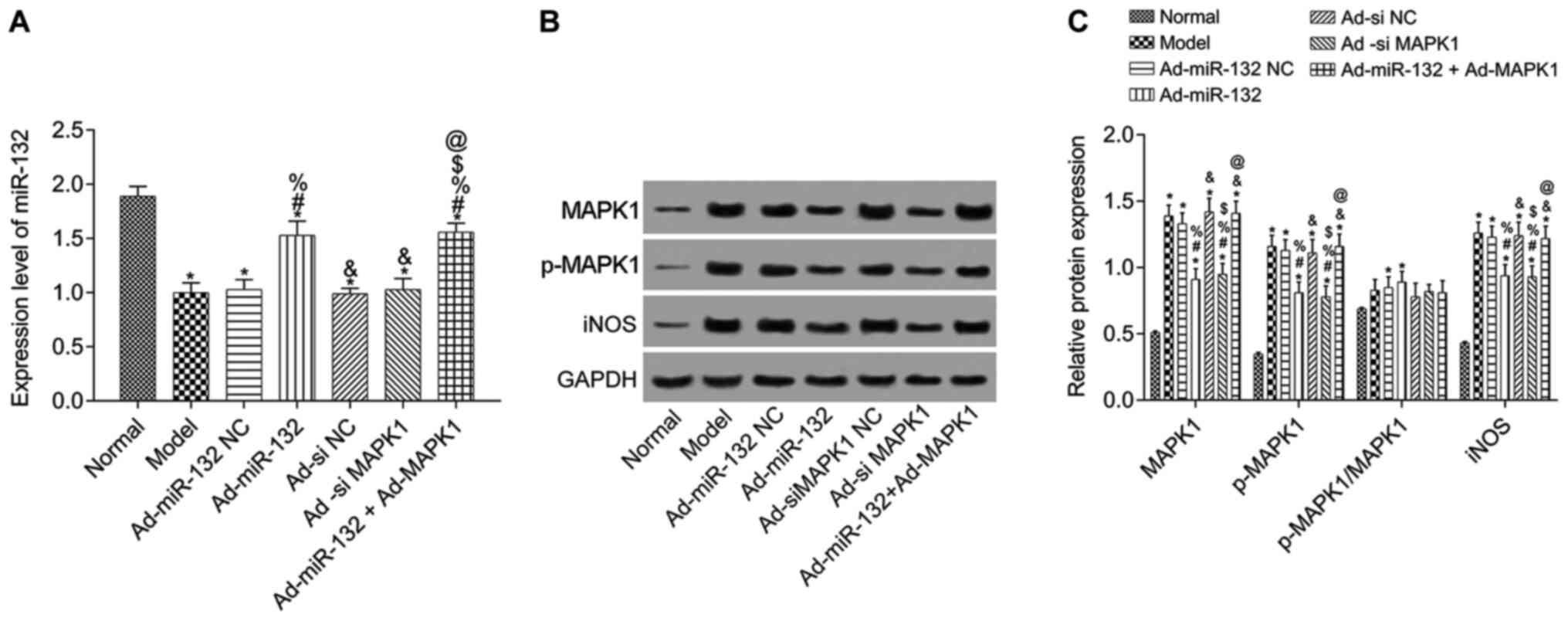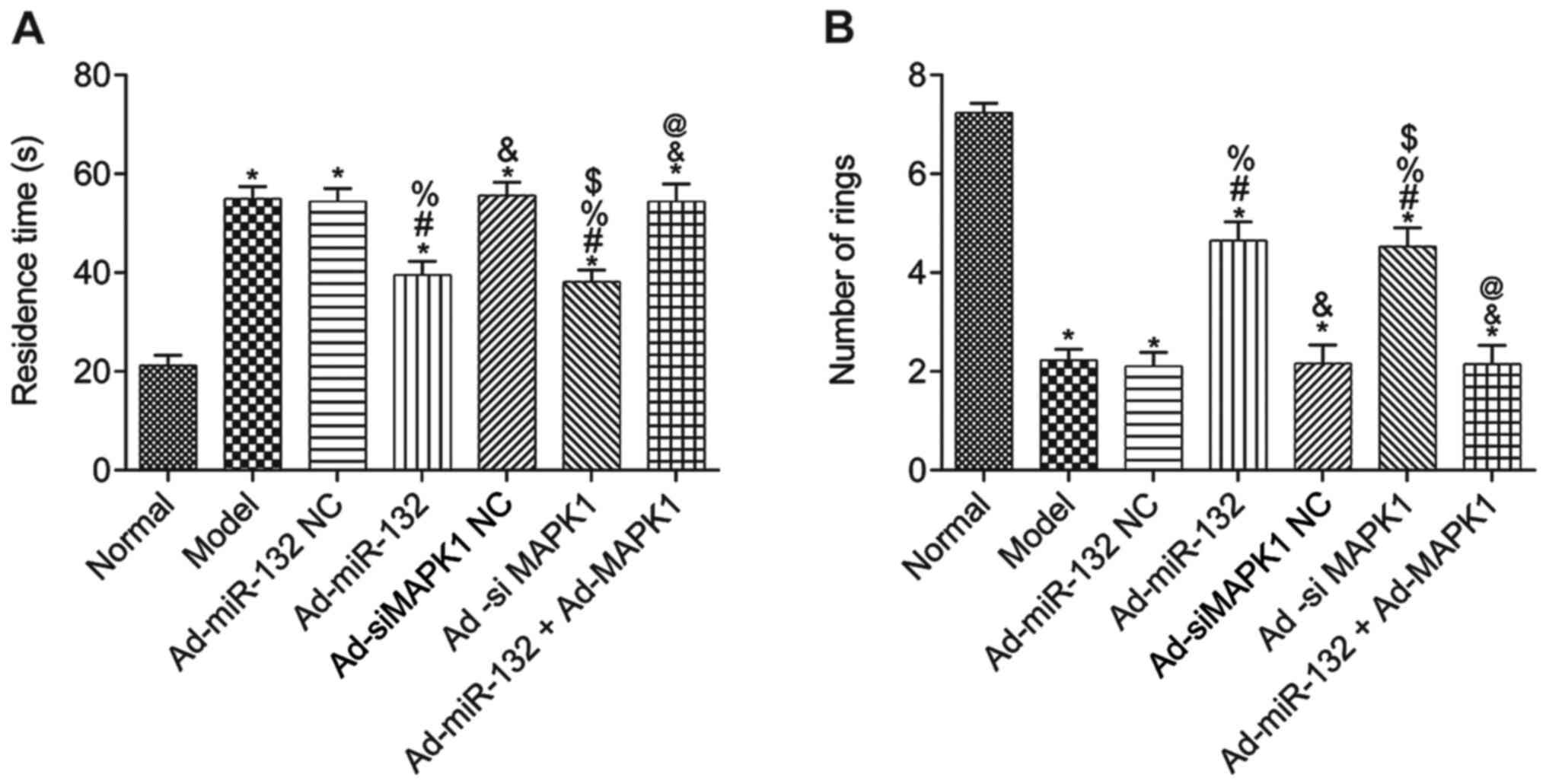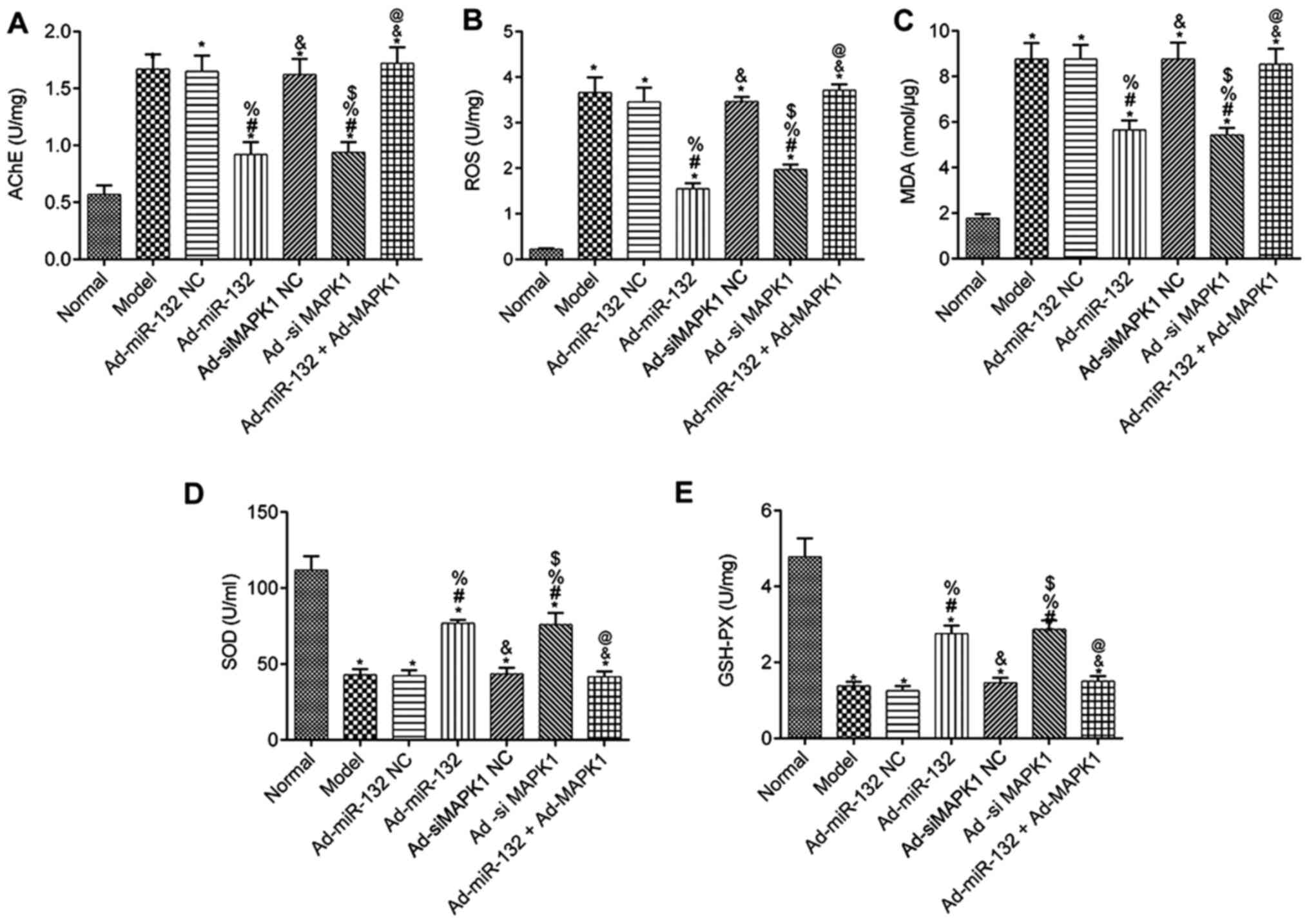|
1
|
Herrera-Espejo S, Santos-Zorrozua B,
Álvarez-González P, Lopez-Lopez E and Garcia-Orad Á: A systematic
review of microRNA expression as biomarker of late-onset
Alzheimer's disease. Mol Neurobiol. 56:8376–8391. 2019.PubMed/NCBI View Article : Google Scholar
|
|
2
|
Pan Y, Liu R, Terpstra E, Wang Y, Qiao F,
Wang J, Tong Y and Pan B: Dysregulation and diagnostic potential of
microRNA in Alzheimer's disease. J Alzheimers Dis. 49:1–12.
2016.PubMed/NCBI View Article : Google Scholar
|
|
3
|
Ossenkoppele R, Mattsson N, Teunissen CE,
Barkhof F, Pijnenburg Y, Scheltens P, van der Flier WM and
Rabinovici GD: Cerebrospinal fluid biomarkers and cerebral atrophy
in distinct clinical variants of probable Alzheimer's disease.
Neurobiol Aging. 36:2340–2347. 2015.PubMed/NCBI View Article : Google Scholar
|
|
4
|
Wu X, Cai H, Pan L, Cui G, Qin F, Li Y and
Cai Z: Small molecule natural products and Alzheimer's disease.
Curr Top Med Chem. 19:187–204. 2019.PubMed/NCBI View Article : Google Scholar
|
|
5
|
Panza GA, Taylor BA, MacDonald HV, Johnson
BT, Zaleski AL, Livingston J, Thompson PD and Pescatello LS: Can
exercise improve cognitive symptoms of Alzheimer's disease? J Am
Geriatr Soc. 66:487–495. 2018.PubMed/NCBI View Article : Google Scholar
|
|
6
|
Torvinen-Kiiskinen S, Tolppanen AM,
Koponen M, Tanskanen A, Tiihonen J, Hartikainen S and Taipale H:
Proton pump inhibitor use and risk of hip fractures among
community-dwelling persons with Alzheimer's disease-a nested
case-control study. Aliment Pharmacol Ther. 47:1135–1142.
2018.PubMed/NCBI View Article : Google Scholar
|
|
7
|
Nikolova G and Mancheva V: Analysis of the
parameters of oxidative stress in patients with Parkinson's
disease. Com Clin Pathol. 22:151–155. 2012.
|
|
8
|
Bouchez C and Devin A: mitochondrial
biogenesis and mitochondrial reactive oxygen species (ROS): A
complex relationship regulated by the cAMP/PKA signaling pathway.
Cells. 8(287)2019.PubMed/NCBI View Article : Google Scholar
|
|
9
|
Gökçe Çokal B, Yurtdaş M, Keskin Güler S,
Güneş HN, Ataç Uçar C, Aytaç B, Durak ZE, Yoldaş TK, Durak İ and
Çubukçu HC: Serum glutathione peroxidase, xanthine oxidase, and
superoxide dismutase activities and malondialdehyde levels in
patients with Parkinson's disease. Neurol Sci. 38:425–431.
2017.PubMed/NCBI View Article : Google Scholar
|
|
10
|
Jiang P, Li C, Xiang Z and Jiao B:
Tanshinone IIA reduces the risk of Alzheimer's disease by
inhibiting iNOS, MMP-2 and NF-κBp65 transcription and translation
in the temporal lobes of rat models of Alzheimer's disease. Mol Med
Rep. 10:689–694. 2014.PubMed/NCBI View Article : Google Scholar
|
|
11
|
Kumar S, Reddy AP, Yin X and Reddy PH:
Novel MicroRNA-455-3p and its protective effects against abnormal
APP processing and amyloid beta toxicity in Alzheimer's disease.
Biochim Biophys Acta Mol Basis Dis. 1865:2428–2440. 2019.PubMed/NCBI View Article : Google Scholar
|
|
12
|
Davidson YS, Raby S, Foulds PG, Robinson
A, Thompson JC, Sikkink S, Yusuf I, Amin H, DuPlessis D, Troakes C,
et al: TDP-43 pathological changes in early onset familial and
sporadic Alzheimer's disease, late onset Alzheimer's disease and
Down's syndrome: Association with age, hippocampal sclerosis and
clinical phenotype. Acta Neuropathol. 122:703–713. 2011.PubMed/NCBI View Article : Google Scholar
|
|
13
|
Cruchaga C, Del-Aguila JL, Saef B, Black
K, Fernandez MV, Budde J, Ibanez L, Deming Y, Kapoor M, Tosto G, et
al: Polygenic risk score of sporadic late-onset Alzheimer's disease
reveals a shared architecture with the familial and early-onset
forms. Alzheimers Dement. 14:205–214. 2018.PubMed/NCBI View Article : Google Scholar
|
|
14
|
Jin SC, Pastor P, Cooper B, Cervantes S,
Benitez BA, Razquin C and Goate A: Ibero-American Alzheimer Disease
Genetics Group Researchers and Cruchaga C. Pooled-DNA sequencing
identifies novel causative variants in PSEN1, GRN and MAPT in a
clinical early-onset and familial Alzheimer's disease
Ibero-American cohort. Alzheimers Res Ther. 4(34)2012.PubMed/NCBI View
Article : Google Scholar
|
|
15
|
Duan Q and Si E: MicroRNA-25 aggravates
Aβ1-42-induced hippocampal neuron injury in Alzheimer's disease by
downregulating KLF2 via the Nrf2 signaling pathway in a mouse
model. J Cell Biochem. 120:15891–15905. 2019.PubMed/NCBI View Article : Google Scholar
|
|
16
|
Yang K, Feng S, Ren J and Zhou W:
Upregulation of microRNA-196a improves cognitive impairment and
alleviates neuronal damage in hippocampus tissues of Alzheimer's
disease through downregulating LRIG3 expression. J Cell Biochem.
120:17811–17821. 2019.PubMed/NCBI View Article : Google Scholar
|
|
17
|
Siedlecki-Wullich D, Català-Solsona J,
Fábregas C, Hernández I, Clarimon J, Lleó A, Boada M, Saura CA,
Rodríguez-Álvarez J and Miñano-Molina AJ: Altered microRNAs related
to synaptic function as potential plasma biomarkers for Alzheimer's
disease. Alzheimers Res Ther. 11(46)2019.PubMed/NCBI View Article : Google Scholar
|
|
18
|
Luikart BW, Bensen AL, Washburn EK,
Perederiy JV, Su KG, Li Y, Kernie SG, Parada LF and Westbrook GL:
miR-132 mediates the integration of newborn neurons into the adult
dentate gyrus. PLoS One. 6(e19077)2011.PubMed/NCBI View Article : Google Scholar
|
|
19
|
Wang WX, Rajeev BW, Stromberg AJ, Ren N,
Tang G, Huang Q, Rigoutsos I and Nelson PT: The expression of
microRNA miR-107 decreases early in Alzheimer's disease and may
accelerate disease progression through regulation of beta-site
amyloid precursor protein-cleaving enzyme 1. J Neurosci.
28:1213–1223. 2008.PubMed/NCBI View Article : Google Scholar
|
|
20
|
Jovicic A, Zaldivar Jolissaint JF, Moser
R, Silva Santos Mde F and Luthi-Carter R: MicroRNA-22 (miR-22)
overexpression is neuroprotective via general anti-apoptotic
effects and may also target specific Huntington's disease-related
mechanisms. PLoS One. 8(e54222)2013.PubMed/NCBI View Article : Google Scholar
|
|
21
|
Smith PY, Hernandez-Rapp J, Jolivette F,
Lecours C, Bisht K, Goupil C, Dorval V, Parsi S, Morin F, Planel E,
et al: miR-132/212 deficiency impairs tau metabolism and promotes
pathological aggregation in vivo. Hum Mol Genet. 24:6721–6735.
2015.PubMed/NCBI View Article : Google Scholar
|
|
22
|
Hansen KF, Sakamoto K, Aten S, Snider KH,
Loeser J, Hesse AM, Page CE, Pelz C, Arthur JS, Impey S and
Obrietan K: Targeted deletion of miR-132/-212 impairs memory and
alters the hippocampal transcriptome. Learn Mem. 23:61–71.
2016.PubMed/NCBI View Article : Google Scholar
|
|
23
|
Weinberg RB, Mufson EJ and Counts SE:
Evidence for a neuroprotective microRNA pathway in amnestic mild
cognitive impairment. Front Neurosci. 9(430)2015.PubMed/NCBI View Article : Google Scholar
|
|
24
|
Li Y, Ba M, Du Y, Xia C, Tan S, Ng KP and
Ma G: Aβ1-42 increases the expression of neural KATP subunits
Kir6.2/SUR1 via the NF-κB, p38 MAPK and PKC signal pathways in rat
primary cholinergic neurons. Hum Exp Toxicol. 38:665–674.
2019.PubMed/NCBI View Article : Google Scholar
|
|
25
|
Jiang S, Zhao Y, Zhang T, Lan J, Yang J,
Yuan L, Zhang Q, Pan K and Zhang K: Galantamine inhibits
β-amyloid-induced cytostatic autophagy in PC12 cells through
decreasing ROS production. Cell Prolif. 51(e12427)2018.PubMed/NCBI View Article : Google Scholar
|
|
26
|
Meng M, Ai D, Sun L, Xu X and Cao X: EGb
761 inhibits Aβ1-42-induced neuroinflammatory response by
suppressing P38 MAPK signaling pathway in BV-2 microglial cells.
Neuroreport. 30:434–440. 2019.PubMed/NCBI View Article : Google Scholar
|
|
27
|
Galoyan AA, Sarkissian JS, Chavushyan VA,
Meliksetyan IB, Avagyan ZE, Poghosyan MV, Vahradyan HG, Mkrtchian
HH and Abrahamyan DO: Neuroprotection by hypothalamic peptide
proline-rich peptide-1 in Abeta25-35 model of Alzheimer's disease.
Alzheimers Dement. 4:332–344. 2008.PubMed/NCBI View Article : Google Scholar
|
|
28
|
Livak KJ and Schmittgen TD: Analysis of
relative gene expression data using real-time quantitative PCR and
the 2(-Delta Delta C(T)) method. Methods. 25:402–408.
2001.PubMed/NCBI View Article : Google Scholar
|
|
29
|
Brennan S, Keon M, Liu B, Su Z and Saksena
NK: Panoramic visualization of circulating microRNAs across
neurodegenerative diseases in humans. Mol Neurobiol. 56:7380–7407.
2019.PubMed/NCBI View Article : Google Scholar
|
|
30
|
Lin Y, Liang X, Yao Y, Xiao H, Shi Y and
Yang J: Osthole attenuates APP-induced Alzheimer's disease through
up-regulating miRNA-101a-3p. Life Sci. 225:117–131. 2019.PubMed/NCBI View Article : Google Scholar
|
|
31
|
Gao S, Lin J, Wang T, Shen Y, Li Y, Yang
W, Zhou K and Hu H: Qingxin kaiqiao fang ameliorates memory
impairment and inhibits apoptosis in APP/PS1 double transgenic mice
through the MAPK pathway. Drug Des Devel Ther. 13:459–475.
2019.PubMed/NCBI View Article : Google Scholar
|
|
32
|
Sadlon A, Takousis P, Alexopoulos P,
Evangelou E, Prokopenko I and Perneczky R: miRNAs identify shared
pathways in Alzheimer's and Parkinson's diseases. Trends Mol Med.
25:662–672. 2019.PubMed/NCBI View Article : Google Scholar
|
|
33
|
Prakash D and Sudhandiran G: Dietary
flavonoid fisetin regulates aluminium chloride-induced neuronal
apoptosis in cortex and hippocampus of mice brain. J Nutr Biochem.
26:1527–1539. 2015.PubMed/NCBI View Article : Google Scholar
|
|
34
|
Che F, Du H, Zhang W, Cheng Z and Tong Y:
MicroRNA-132 modifies angiogenesis in patients with ischemic
cerebrovascular disease by suppressing the NF-κB and VEGF pathway.
Mol Med Rep. 17:2724–2730. 2018.PubMed/NCBI View Article : Google Scholar
|
|
35
|
Hwang S, Jeong H, Hong EH, Joo HM, Cho KS
and Nam SY: Low-dose ionizing radiation alleviates Aβ42-induced
cell death via regulating AKT and p38 pathways in Drosophila
Alzheimer's disease models. Biol Open. 8(bio036657)2019.PubMed/NCBI View Article : Google Scholar
|
|
36
|
Kim SJ, Hwang SG, Shin DY, Kang SS and
Chun JS: p38 kinase regulates nitric oxide-induced apoptosis of
articular chondrocytes by accumulating p53 via NFkappa B-dependent
transcription and stabilization by serine 15 phosphorylation. J
Biol Chem. 277:33501–33508. 2002.PubMed/NCBI View Article : Google Scholar
|
|
37
|
Muraleva NA, Kolosova NG and Stefanova NA:
p38 MAPK-dependent alphaB-crystallin phosphorylation in Alzheimer's
disease-like pathology in OXYS rats. Exp Gerontol. 119:45–52.
2019.PubMed/NCBI View Article : Google Scholar
|
|
38
|
Chen Y, Liang Z, Blanchard J, Dai CL, Sun
S, Lee MH, Grundke-Iqbal I, Iqbal K, Liu F and Gong CX: A
non-transgenic mouse model (icv-STZ mouse) of Alzheimer's disease:
Similarities to and differences from the transgenic model (3xTg-AD
mouse). Mol Neurobiol. 47:711–725. 2013.PubMed/NCBI View Article : Google Scholar
|
|
39
|
Hu Z, Jiao R, Wang J, Wang P, Zhu Y, Zhao
J, De Jager P, Bennett DA, Jin L and Xiong M: Shared causal paths
underlying Alzheimer's dementia and type 2 diabetes. Sci Rep.
10(4107)2020.PubMed/NCBI View Article : Google Scholar
|
|
40
|
Ishimoto T, Sugihara H, Watanabe M,
Sawayama H, Iwatsuki M, Baba Y, Okabe H, Hidaka K, Yokoyama N,
Miyake K, et al: Macrophage-derived reactive oxygen species
suppress miR-328 targeting CD44 in cancer cells and promote redox
adaptation. Carcinogenesis. 35:1003–1011. 2014.PubMed/NCBI View Article : Google Scholar
|
|
41
|
Ebi H, Sato T, Sugito N, Hosono Y, Yatabe
Y, Matsuyama Y, Yamaguchi T, Osada H, Suzuki M and Takahashi T:
Counterbalance between RB inactivation and miR-17-92 overexpression
in reactive oxygen species and DNA damage induction in lung
cancers. Oncogene. 28:3371–3379. 2009.PubMed/NCBI View Article : Google Scholar
|
|
42
|
Taupin P: A dual activity of ROS and
oxidative stress on adult neurogenesis and Alzheimer's disease.
Cent Nerv Syst Agents Med Chem. 10:16–21. 2010.PubMed/NCBI View Article : Google Scholar
|




















